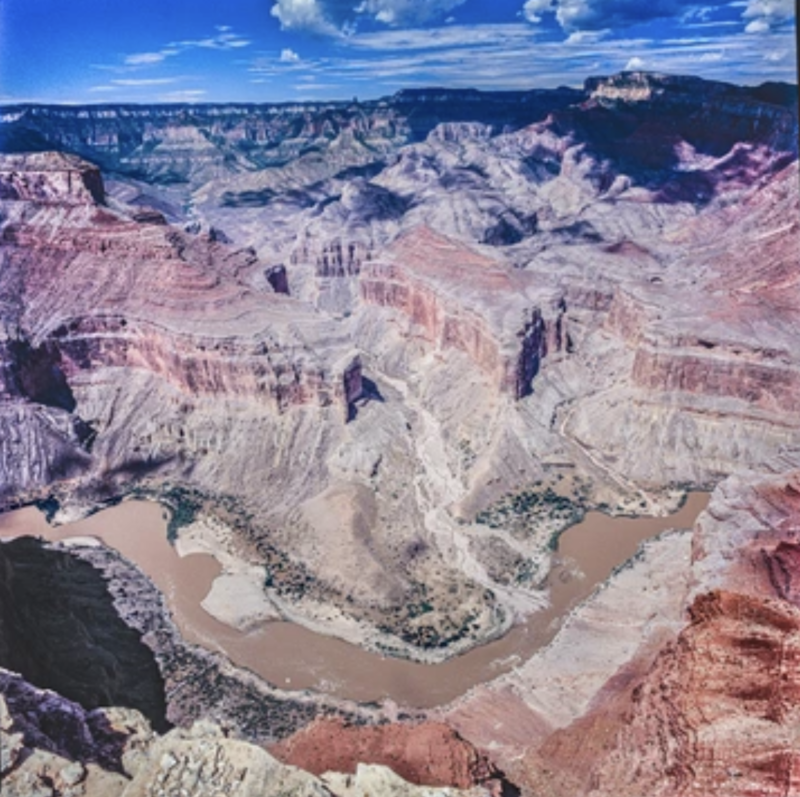The University of Arizona News published this story on July 15, 2025. Edits by EarthSky.
Meteor Crater and Grand Canyon connection?
Two world-famous attractions in the U.S. state of Arizona – the Grand Canyon and Meteor Crater – might share a hidden connection, according to new research from the University of Arizona and the University of New Mexico.
An international research team presented the results of its investigation this week (on July 15, 2025), in the peer-reviewed journal Geology. They described an intriguing “detective story” that has played out over several decades and across scientific disciplines. The team is proposing that the meteorite impact just west of Winslow, Arizona – which created Meteor Crater some 56,000 years ago and only 118 miles away – might have triggered a massive landslide that dammed the Colorado River and created an ancient lake 50 miles long and nearly 300 feet deep.
The journal Geology published this idea on July 15, 2025. Chris Baisan, a senior research specialist at the U of A Laboratory for Tree-Ring Research, said:
It is important to understand the effects of meteor impacts on the Earth, such as the one that contributed to the extinction of the dinosaurs, and we think we found a link between the strike that created Meteor Crater and a paleolake in the Grand Canyon that formed at the same time.
Baisan is a co-lead author on the study with Karl Karlstrom from the University of New Mexico.
Driftwood and lake sediments have been long known in a cave called Stanton’s Cave in Marble Canyon of eastern Grand Canyon.
The mouth of the cave is 150 feet above the river, so the detective story has been to figure out how and when did the driftwood got there?
Karlstrom, a distinguished professor emeritus at UNM in Albuquerque, said:
It would have required a 10 times bigger flood level than any flood that has happened in the past several thousand years.
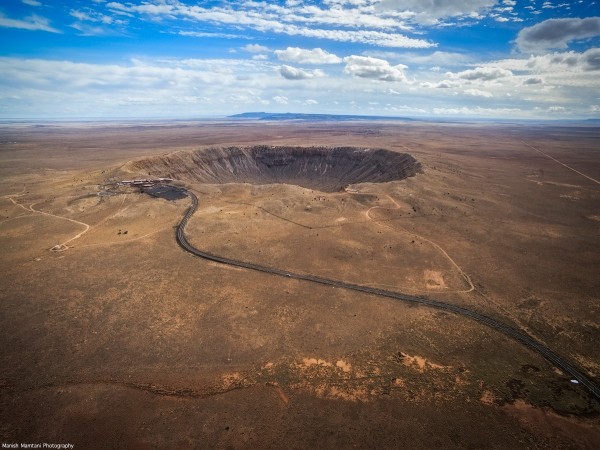
A decades-long investigation
In the 1980s, Richard Hereford of the U.S. Geological Survey in Flagstaff and one of the paper’s co-authors, presented evidence of a rockslide near Nankoweap Canyon at river mile 52, about 22 river miles downstream of Stanton’s Cave, that might have formed a dam and a paleolake that allowed driftwood to float into the cave.
The driftwood was first excavated and radiocarbon dated in 1970, suggesting it was older than 35,000 years. Technological advances allowed for subsequent refinement of the dating accuracy, allowing researchers to increase their confidence in the results over time. In 2019, using state of the art equipment, Jonathan Palmer, one of the paper’s co-authors from the University of New South Wales in Sydney who specializes on dating extremely ancient samples, found the driftwood to date back to about 55,000 years.
As with many detective stories, chance and coincidence loom large in this one, too. During a visit to the U of A’s Tree-Ring Lab, where Baisan had been serendipitously working on the Stanton Cave driftwood collections, Palmer, went on a road trip and stopped at Meteor Crater.
The date of the impact – 50,000 years – caught his attention. Could there be a link between the two events? Baisan said:
Now there was this question, completely out of the blue, that nobody had asked before. And it just happened because of people from different parts of the world happened to visit each other.
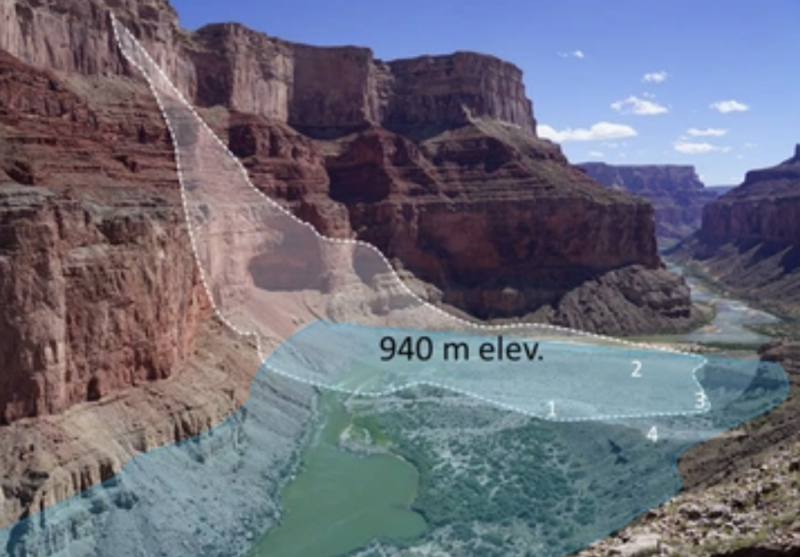
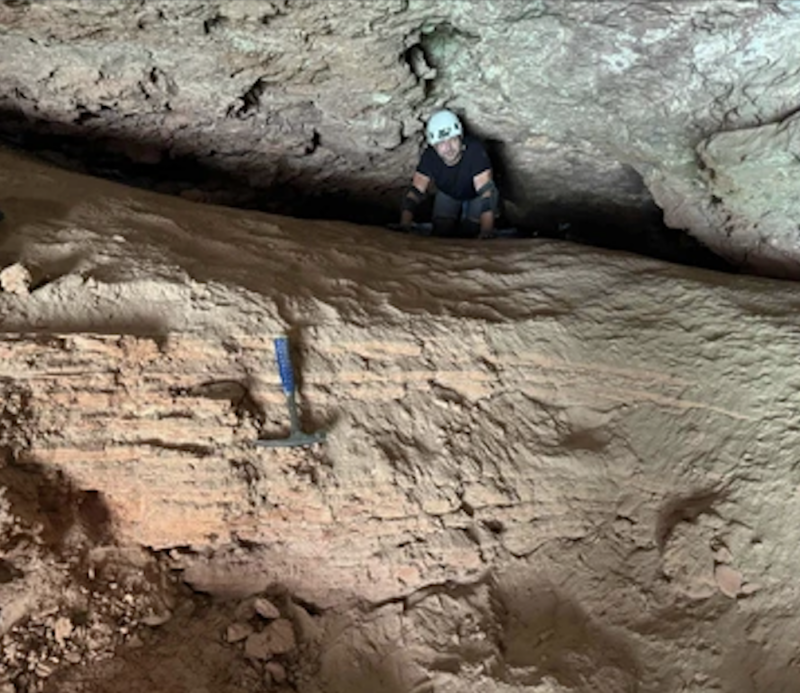
Samples from another site, downstream
The scientists wrote a draft paper proposing the link, but the evidence seemed mainly circumstantial, and the presence of the rockfall dam and paleolake was not universally accepted. The draft was sent to Karlstrom, an expert on Grand Canyon geomorphology, for review and comment.
Together with the paper’s senior author, Laura Crossey, a distinguished professor at UNM, Karlstrom managed to locate and collect sediment and wood samples from an additional site downstream from the cave at roughly the same height above the river. Dating the two independent sample sets – wood and sediments – revealed the same age for both: 55,600 years, providing strong support for this study.
The paper also reports findings from two places where the chaotically deposited dam material at Nankoweap Canyon is overlain by river cobbles deposited as the river over-topped the dam and began to erode it. This process likely would have lasted less than 1,000 years based on analogies to modern concrete dams are filling up with sediment, according to the authors.
The paper also reports findings from two places where the chaotically deposited dam material at Nankoweap Canyon is overlain by river cobbles deposited as the river over-topped the dam and began to erode it. This process likely would have lasted less than 1,000 years based on analogies to modern concrete dams are filling up with sediment, according to the authors.
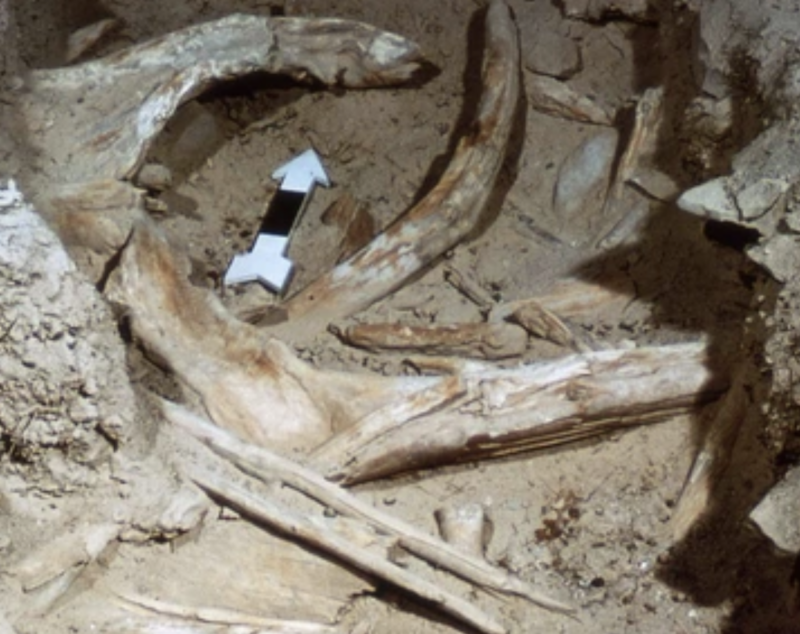
Grand Canyon mystery solved?
The crucial question of any detective story is, of course: “Who dunnit?” In this case, was the Meteor Crater impact enough to cause such a landslide? Meteor Crater Science Coordinator David Kring, calculated that the earthquake set off by the 300,000-ton nickel-iron meteorite would have reached magnitude 5.4 or even 6 on the Richter scale. Traveling the 100 miles to the Grand Canyon in a matter of seconds, the shock wave would still have packed a punch of an estimated 3.5 – 4.1 magnitude once it arrived. Baisan said:
We don’t know exactly what the ground shaking intensity was. There would have been the shock wave as the object passes through the air, then the blast wave, and finally the impact, which might have been enough to trigger a landslide in the canyon.
While the exact path and altitude of the meteor are not known, the authors deem it plausible that the triple effect was enough to shake loose portions of the canyon’s steep cliffs that were “waiting and ready to go.” While rockfalls are a common occurrence in the Grand Canyon, events with the capability to dam the river and create a lake, such as the Nankoweap rockfall, are exceedingly rare. Karlstrom said:
We put together these arguments without claiming we have final proof. There are other possibilities, such as a random rockfall or local earthquake within a thousand years of the Meteor Crater impact that could have happened independently.
Nevertheless, the meteorite impact, the massive landslide, the lake deposits and the driftwood high above river level are all rare and unusual occurrences.
Bottom line: Two world-famous Arizona attractions – the Grand Canyon and Meteor Crater Natural Landmark – might share a hidden connection.
Source (Geology, July 15, 2025): Grand Canyon landslide-dam and paleolake triggered by the Meteor Crater impact at 56 ka
Via University of Arizona
